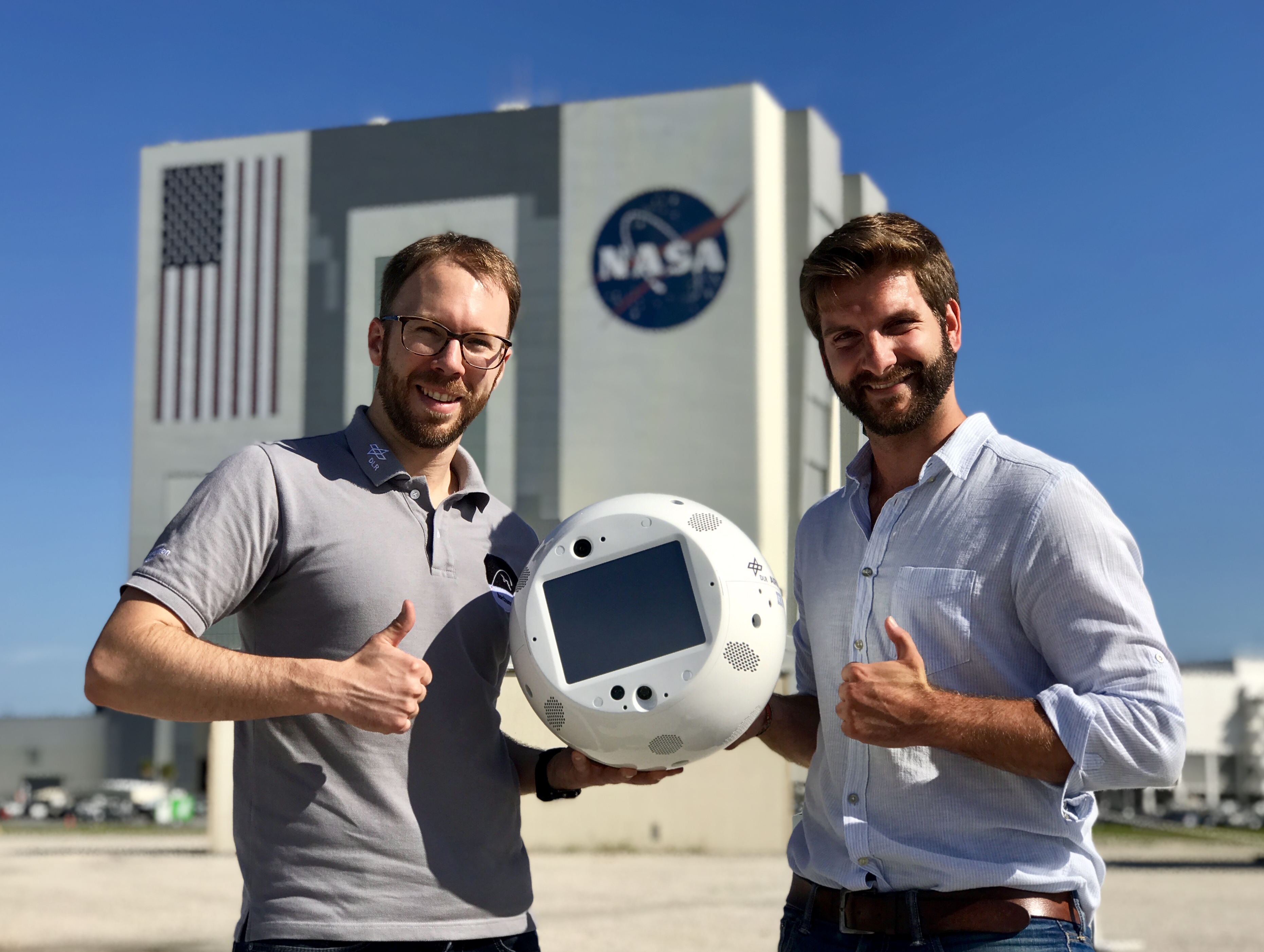|
Int-Ball
The Int-Ball, also known as the JEM Internal Ball Camera, is an experimental, autonomous, self-propelled, and maneuverable ball camera that is deployed in the Japanese Kibō module of the International Space Station. It was delivered aboard SpaceX CRS-11 on June 4, 2017. The Int-Ball is intended to perform some of the photo-video documentation workload aboard the ISS. The Int-Ball was designed by the Japan Aerospace Exploration Agency and is controlled and monitored by a team of JAXA ground controllers. The Int-Ball naturally floats in the station's zero-gravity environment, allowing it to maneuver freely within the ISS. It weighs , is in diameter, and is propelled by an array of 12 small electric fans mounted on the ball's outer surface. The unit shares many similarities with Earth-based drone motion control and drone camera systems. The Int-Ball's motion control system is capable of executing a rotation on any axis, and is also capable of overall movement in any general direc ... [...More Info...] [...Related Items...] OR: [Wikipedia] [Google] [Baidu] |
Ball Camera
A ball camera or camera ball is a spherical camera, one version of which has been designed to be thrown into the air to take panoramic pictures from a height or in an inaccessible or dangerous location. Several models of "throwable ball cameras" have been developed in the 2010s. In 2017 a floating version of the ball camera was designed for use in zero-gravity environments, such as in the International Space Station, and was dubbed the '' Int ball,'' or JEM Internal Ball Camera July 14, 2017. JAXA. Downloaded July 18, 2017. See also * Panono * |
Robonaut
A robonaut is a humanoid robot, part of a development project conducted by the Dexterous Robotics Laboratory at NASA's Lyndon B. Johnson Space Center (JSC) in Houston, Texas. Robonaut differs from other current space-faring robots in that, while most current space robotic systems (such as robotic arms, cranes and exploration rovers) are designed to move large objects, Robonaut's tasks require more dexterity. The core idea behind the Robonaut series is to have a humanoid machine work alongside astronauts. Its form factor and dexterity are designed such that Robonaut can use space tools and work in similar environments suited to astronauts. ie. "is capable of performing all of the tasks required of an EVA suited crewmember." NASA states "Robonauts are essential to NASA's future as we go beyond low Earth orbit", and R2 will provide performance data about how a robot may work side-by-side with astronauts. The latest Robonaut version, R2, was delivered to the International Space St ... [...More Info...] [...Related Items...] OR: [Wikipedia] [Google] [Baidu] |
Cimon (robot)
Cimon or officially CIMON (Crew Interactive Mobile companion) is a head-shaped AI robot used in the International Space Station. The device is "an AI-based assistant for astronauts" developed by Airbus and IBM, with funding from the German Aerospace Center. The device is modelled after the character of Professor Simon Wright, "the flying brain," from the anime series Captain Future. Cimon runs on Ubuntu, while its Natural Language Capability is supplied bIBM Watson CIMON maneuvers through the space station using fans. Purpose The goal of Cimon is to reduce stress. Judith-Irina Buchheim and Alexander Choukèr, the advisors of Cimon, claim "As a partner and assistant, CIMON could support astronauts with their high workload of experiments and maintenance and repair work, thereby reducing their exposure to stress."(2018). Cimon - The Intelligent Robot Assistant. European Space Agency. Retrieved from https://www.dlr.de/content/en/articles/news/2018/1/20180302_cimon-the-intelligent ... [...More Info...] [...Related Items...] OR: [Wikipedia] [Google] [Baidu] |
(iss052e046674) Peggy Whitson With JEM Internal Ball Camera
The International Space Station (ISS) is the largest modular space station currently in low Earth orbit. It is a multinational collaborative project involving five participating space agencies: NASA (United States), Roscosmos (Russia), JAXA (Japan), ESA (Europe), and CSA (Canada). The ownership and use of the space station is established by intergovernmental treaties and agreements. The station serves as a microgravity and space environment research laboratory in which scientific research is conducted in astrobiology, astronomy, meteorology, physics, and other fields. The ISS is suited for testing the spacecraft systems and equipment required for possible future long-duration missions to the Moon and Mars. The ISS programme evolved from the Space Station ''Freedom'', a 1984 American proposal to construct a permanently crewed Earth-orbiting station, and the contemporaneous Soviet/Russian ''Mir-2'' proposal from 1976 with similar aims. The ISS is the ninth space station to be i ... [...More Info...] [...Related Items...] OR: [Wikipedia] [Google] [Baidu] |
_Peggy_Whitson_with_JEM_Internal_Ball_Camera.jpg)

